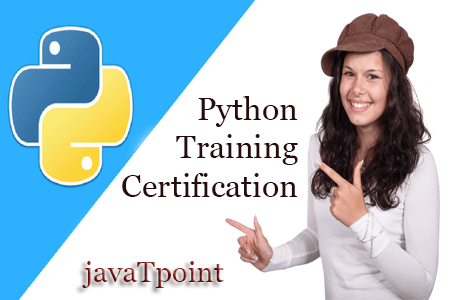Python tutorial |learn python programming
 manoj sharma
manoj sharma
Python tutorial provides basic and advanced concepts of Python. Our Python tutorial is designed for beginners and professionals.
Python is a simple, general purpose, high level, and object-oriented programming language.
Python is an interpreted scripting language also. Guido Van Rossum is known as the founder of Python programming.
Our Python tutorial includes all topics of Python Programming such as installation, control statements, Strings, Lists, Tuples, Dictionary, Modules, Exceptions, Date and Time, File I/O, Programs, etc. There are also given Python interview questions to help you better understand Python Programming.
What is Python
Python is a general-purpose, dynamic, high-level, and interpreted programming language. It supports Object Oriented programming approach to develop applications. It is simple and easy to learn and provides lots of high-level data structures.
Python is an easy-to-learn yet powerful and versatile scripting language, which makes it attractive for Application Development.
With its interpreted nature, Python's syntax and dynamic typing make it an ideal language for scripting and rapid application development.
Python supports multiple programming patterns, including object-oriented, imperative, and functional or procedural programming styles.
Python is not intended to work in a particular area, such as web programming. It is a multipurpose programming language because it can be used with web, enterprise, 3D CAD, etc.
We don't need to use data types to declare variable because it is dynamically typed, so we can write a=10 to assign an integer value in an integer variable.
Python makes development and debugging fast because no compilation step is included in Python development, and the edit-test-debug cycle is very fast.
Python has many web-based assets, open-source projects, and a vibrant community. Learning the language, working together on projects, and contributing to the Python ecosystem are all made very easy for developers.
Because of its straightforward language framework, Python is easier to understand and write code in. This makes it a fantastic programming language for novices. Additionally, it assists seasoned programmers in writing clearer, error-free code.
Python is an open-source, cost-free programming language. It is utilized in several sectors and disciplines as a result.
In Python, code readability and maintainability are important. As a result, even if the code was developed by someone else, it is easy to understand and adapt by some other developer.
Python has many third-party libraries that can be used to make its functionality easier. These libraries cover many domains, for example, web development, scientific computing, data analysis, and more.
Python Basic Syntax
There is no use of curly braces or semicolon in Python programming language. It is English-like language. But Python uses the indentation to define a block of code. Indentation is nothing but adding whitespace before the statement when it is needed. For example -
def func():
statement 1
statement 2
…………………
…………………
statement N
In the above example, the statements that are the same level to the right belong to the function. Generally, we can use four whitespaces to define indentation.
Instead of Semicolon as used in other languages, Python ends its statements with a NewLine character.
Python is a case-sensitive language, which means that uppercase and lowercase letters are treated differently. For example, 'name' and 'Name' are two different variables in Python.
In Python, comments can be added using the '#' symbol. Any text written after the '#' symbol is considered a comment and is ignored by the interpreter. This trick is useful for adding notes to the code or temporarily disabling a code block. It also helps in understanding the code better by some other developers.
'If', 'otherwise', 'for', 'while', 'try', 'except', and 'finally' are a few reserved keywords in Python that cannot be used as variable names. These terms are used in the language for particular reasons and have fixed meanings. If you use these keywords, your code may include errors, or the interpreter may reject them as potential new Variables.
Subscribe to my newsletter
Read articles from manoj sharma directly inside your inbox. Subscribe to the newsletter, and don't miss out.
Written by
